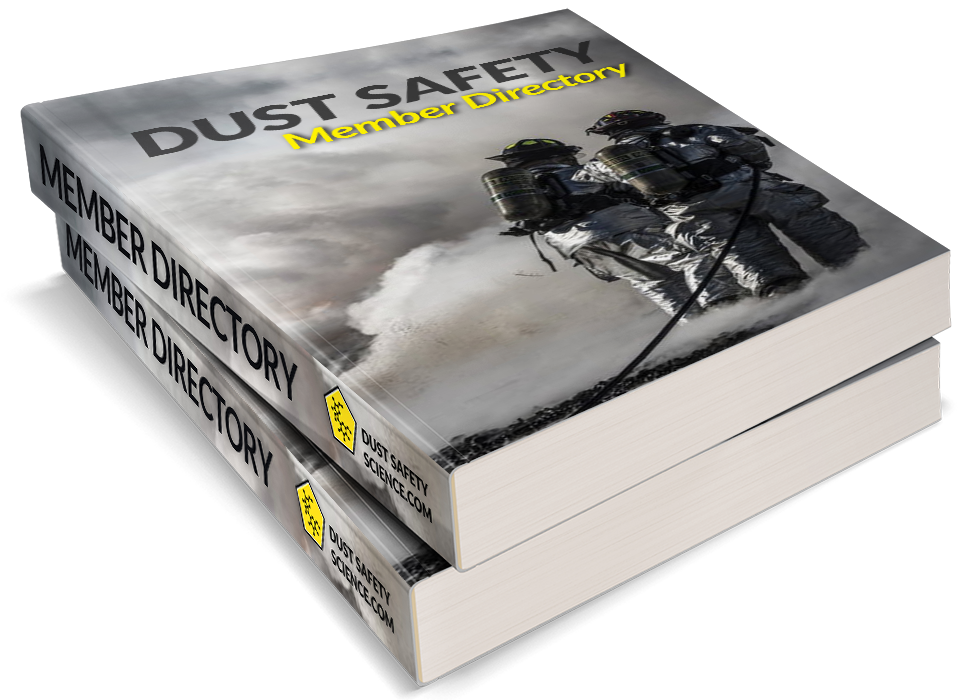In this episode of the DustSafetyScience podcast, we are interviewing Jess McCluer, Vice President of Safety and Regulatory Affairs at the National Feed and Grain Association, about combustible dust safety resources.
Jess has over 12 years’ experience with NGFA. He’s also chairman at the Agricultural Safety and Health Council America (ASHCA) and he’s involved in the NFPA and some of the NFPA committees, so he has a deep knowledge of agricultural safety and combustible dust safety within these industries.
Jess will be presenting a keynote at the Digital Dust Safety Conference, where he will talk about the history of combustible dust safety within agriculture industries and the grain handling standard. In this episode, he answers the following questions:
- What educational and outreach activities have the NGFA done with regards to combustible dust?
- How has the grain handling standard reduced the severity of grain elevator explosions?
- What resources does the NGFA use to teach safety?
- How can other associations provide these resources for their members?
What educational and outreach activities have the NGFA done with regards to combustible dust?
Jess acknowledged that combustible dust was a key topic within his industry.”As far as the grain handling industry goes in the United States, we’re in a very unique position and we’re the only industry that’s regulated by a government agency.”
Federal OSHA regulates the amount of dust handled at the grain and feed processing and milling facilities. With grain elevators, no more than 1/8” of dust is permitted within a 25- foot hazard area. Since this standard was promulgated in 1988, NGFA has been working to develop education and training material for those in the industry to make them aware of what is and isn’t allowed as well as how to comply with the standard and reduce the hazard within the facilities.
During the late 1970s, large explosions were taking place at grain handling facilities, which inspired OSHA to develop the standard. The NGFA developed the Fire and Explosion Research Council to focus on ways to help mitigate the hazards that were causing those explosions. It also worked with universities to share its findings and support additional research into combustible dust safety.
How has the grain handling standard reduced the severity of grain elevator explosions?
According to Jess, the grain handling standard emphasized the importance of housekeeping. Even 1/8 of an inch of dust could ignite a primary explosion. Since 1976, the number of bushels of grain being handled by facilities has gone up by 50%, yet explosions have declined by 54%, injuries by 72%, and fatalities by 89%. These statistics prove the effectiveness of the standard and its basic requirements.
What resources does the NGFA use to teach safety?
The NGFA website has a Safety Page with information on many different safety and health-related topics. There are short videos on housekeeping and general safety documents like the following:
- Promoting Safety in the Grain, Feed and Processing Industry
- NGFA Safety Tips: Combustible Dust and OSHA Housekeeping Requirements
- NGFA Safety Tips: Dust Suppression Techniques
Jess added that the NGFA has an annual event called Convey. Every year, industry professionals talk about safety and health, operations-related issues, dust control, dust emission, and housekeeping. The 2020 event will be held at the end of July in Omaha, Nebraska.
How can other associations provide these resources for their members?
Jess pointed out that every industry is unique. An oil refinery is not the same as a grain handling facility, yet they both deal with products that are combustible. “I think the real challenge has always been that there’s not a one-size-fits-all policy for controlling hazards at these facilities,” he said.
This is where associations make an essential contribution to safety. They’re all comprised of members who have knowledge and expertise in their field. However, results don’t happen overnight. It takes time to develop that expertise and develop the willingness of everyone involved to see combustible dust safety as a number one priority.
Conclusion
By its example, the NGFA has proven the importance of industry experts working with regulators to share information and create requirements. This approach puts everyone on the same page and, as the statistics show, it is possible for operation volume to go up while the frequency of combustible dust incidents goes down.
If you would like to discuss further, leave your thoughts in the comments section below. You can also reach Jess McCluer directly:
Tel: 202-888-1102
Email: [email protected]
LinkedIn: https://www.linkedin.com/in/jess-mccluer-a72b6/
Website: https://www.ngfa.org/
If you have questions about the contents of this or any other podcast episode, you can go to our ‘Questions from the Community’ page and submit a text message or video recording. We will then bring someone on to answer these questions in a future episode.
Resources Mentioned
DustSafetyScience:
Combustible Dust Incident Database
DustSafetyScience Podcast
Questions from the Community
2020 Digital Dust Safety Conference
Organizations:
National Feed and Grain Association (Safety Page)
NFPA
OSHA
Agricultural Safety and Health Council America (ASHCA)
NFGA Safety Resources:
Promoting Safety in the Grain, Feed and Processing Industry
NGFA Safety Tips: Combustible Dust and OSHA Housekeeping Requirements
NGFA Safety Tips: Dust Suppression Techniques
Events:
Convey 2020
Thanks for Listening!
To share your thoughts:
- Leave a note in the comment section below
- Ask a question to be answered on the show
- Share this episode on LinkedIn, Twitter or Facebook
To help out the show:
- Subscribe to the podcast on iTunes
- Leave a review and rate our show in iTunes to help the podcast reach more people
